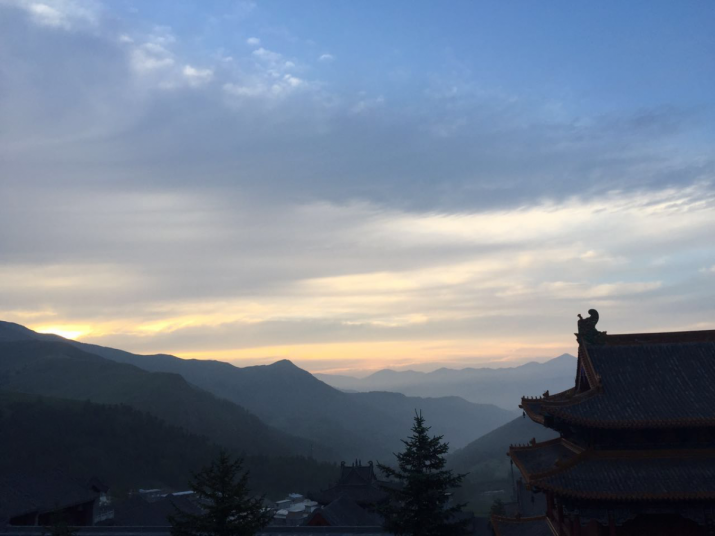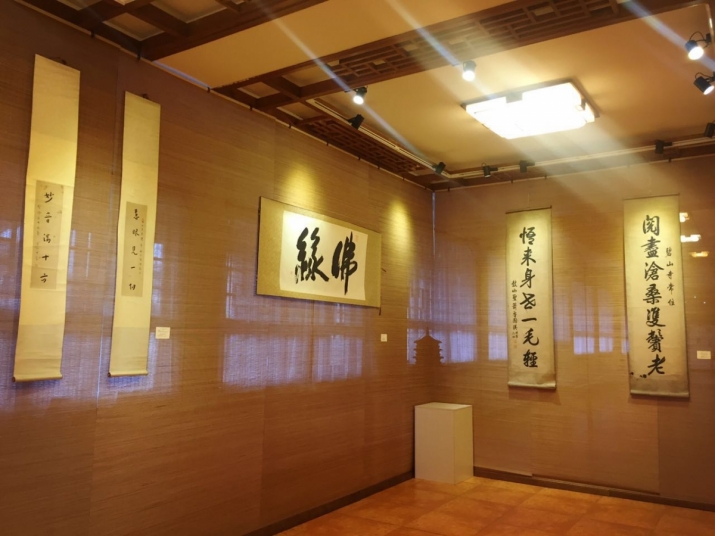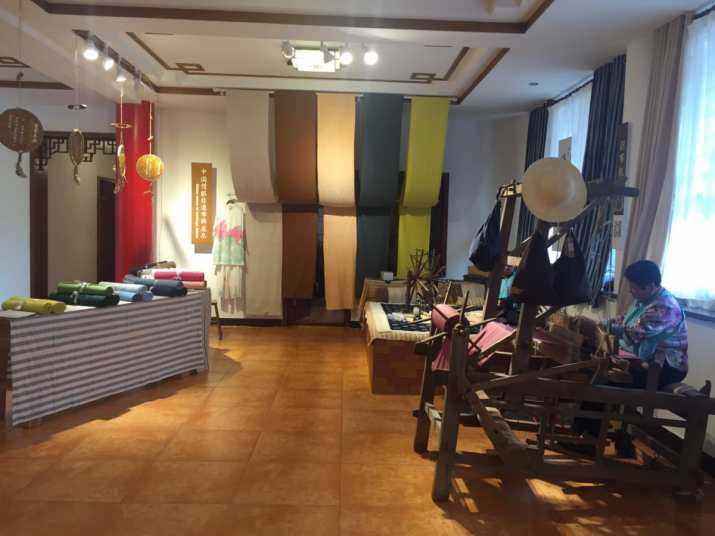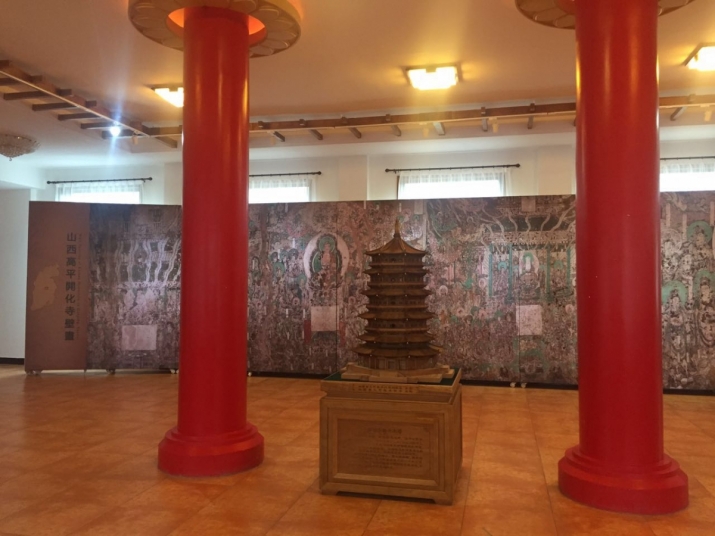NEWS
Exhibition on Shanxi Buddhist Art and Intangible Cultural Heritage Opens to Public
 Sunrise at the Great Sage Monastery of Bamboo Grove. From Guoying Stacy Zhang
Sunrise at the Great Sage Monastery of Bamboo Grove. From Guoying Stacy ZhangThe Exhibition on Shanxi Buddhist Art and Intangible Cultural Heritage opens today on 19 July at the Great Sage Monastery of Bamboo Grove (Dasheng Zhulin Si) on Mount Wutai, the mythic dwelling of the bodhisattva Manjushri. There is no exact concluding date, but the exhibit is expected to extend over the summer.
The exhibition coincides with the opening ceremony and keynote speech session of the Second International Conference on the Wutai Cult. The UBC Buddhist Studies Forum website notes that the conference, which brings together Chinese and Western scholars, will be exploring “a plethora of trans-cultural, multi-ethnic, and cross-regional factors that contributed to the formation and transformation of the cult centered on Wutai and its dwelling bodhisattva (Manjushri), as well as the ‘international’ roles (religious, political, economic, commercial, diplomatic and even military) that the Wutai-centered cult has played in Asia and beyond.” (blogs.ubc.ca)
The Exhibition on Shanxi Buddhist Art and Intangible Cultural Heritage assembles a wide range of Buddhist art made in Shanxi from the ancient past up to modernity, presenting the dynamic interactions between Buddhism and local cultures as well as the long and influential history of Buddhism in the area. It is an initiative coordinated by the sangha, laity, and volunteers, from curating to logistics.
 Calligraphic works by Ven. Miaojiang, Ven Hongyi, and Ven. Yuanying. From Guoying Stacy Zhang
Calligraphic works by Ven. Miaojiang, Ven Hongyi, and Ven. Yuanying. From Guoying Stacy ZhangExhibits include calligraphy by monks like Ven. Miaojiang, abbot of the Great Sage Monastery of Bamboo Grove and deputy director of the Chinese Buddhist Association, as well as calligraphy by Ven. Hongyi and Ven. Yuanying from Bishan Monastery, another temple on Mount Wutai. There are also demonstrations of local Shanxi culture like papermaking, weaving, and spinning, and pottery of different periods in Shanxi history will be displayed.
 Weaving display. From Guoying Stacy Zhang
Weaving display. From Guoying Stacy ZhangGuoying Stacy Zhang, curator of the exhibit and a graduate of the MA in Buddhist Art: History and Conservation program at the Robert H. N. Ho Family Foundation Centre for Buddhist Art and Conservation at the Courtauld Institute of Art, told Buddhistdoor: “This exhibit is open to the public but first intended for all the conference participants. We would like to present more about Buddhist art and history in Shanxi and to encourage international scholars to pay more attention to these subjects. We’d like them to consider Shanxi Buddhism as a subject for serious research.”
She continued: “The Mogao Grottoes at Dunhuang are perhaps the best-known Buddhist landmarks in China for art historians. However, there are many more places in China yet to be recognized. This is particularly true in Shanxi. For instance, at the exhibition, we reproduced a section of a wall painting from Kaihua Monastery in Gaoping County. It depicts scenes from the Avatamsaka Sutra and is dated to the year 1096 of the Northern Song. Its religious and artistic significance have not been fully acknowledged.”
 Replica of wall painting from Kaihua Monastery. From Guoying Stacy Zhang
Replica of wall painting from Kaihua Monastery. From Guoying Stacy ZhangMiss Zhang was tasked by the committee of the Wutai International Institute of Buddhism and East Asian Cultures with visiting four sites in Shanxi (Mingxiu Monastery, Xuanzhong Monastery, the Thousand Buddha Caves, and Xiaoxitian [Little Western Paradise]) with her colleagues to create a display board of the route from that would be displayed at the exhibition. The purpose was to present some of the lesser-known Buddhist temples and sacred art in Shanxi.
“My MA at the Courtauld was about polychrome clay sculptures kept at Xiaoxitian, a temple not known to many. The other sites were completely new to me. I’ve been very interested in Buddhist art in Shanxi, and have been coming to Shanxi and Mount Wutai annually since 2014. I feel really grateful for the opportunity to help with this exhibition and have enjoyed every part of it,” she told Buddhistdoor.
See more
The Second International Conference On the Wutai Cult (blogs.ubc.ca)














